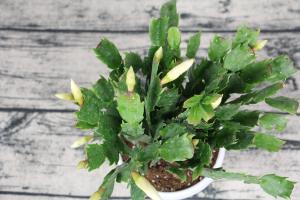Introduction
Tomatoes are one of the most popular vegetables to grow in gardens. However, the timing of planting tomatoes outside can be tricky, as they are sensitive to both cold and heat. This article will provide tips on when you can safely plant tomatoes outdoors to ensure a healthy and bountiful harvest.
Factors to Consider
Several factors should be taken into account when determining when to plant tomatoes outside. These include:
Last Frost Date: In general, tomatoes should not be planted outdoors until after the last frost date in your area. Planting too early can lead to damage or death from freezing temperatures.
Soil Temperature: Tomatoes thrive in warm soil, so it's essential to wait until the soil is consistently above 60 degrees Fahrenheit before planting outdoors.
Location: The location of your garden can also affect the timing of planting tomatoes. In cooler regions, it may be best to start seeds indoors and transplant them outside once temperatures warm up.
Timing for Planting Tomatoes Outside
The optimal time for planting tomatoes outdoors varies depending on your location and climate. In general, most gardeners should aim to plant tomatoes outdoors two weeks after their area's last frost date. However, this can vary based on soil and air temperature. If the soil is still cool, it's best to wait a bit longer to avoid stunting the plant's growth.
It's also important to keep in mind that tomatoes require warm and sunny weather to thrive. If temperatures regularly drop below 50 degrees Fahrenheit in the evening, it's best to wait until conditions improve before planting tomatoes outside.
Alternative Options
If you live in an area with a short growing season or cooler temperatures, there are several alternative options for planting tomatoes outside:
Start Seeds Indoors: Starting tomato seeds indoors allows you to get a head start on the growing season. Sow seeds six to eight weeks before your area's last frost date in a warm and well-lit location. Once the seedlings have grown to 3-4 inches tall, transplant them outside.
Use Season Extenders: Season extenders, such as cloches, row covers, or cold frames, can help protect tomato plants from cold temperatures and frost. These devices trap heat and can extend the growing season by several weeks.
Choose Cold-Tolerant Varieties: There are several tomato varieties that were developed specifically for cooler climates. Look for varieties like Glacier, Stupice, or Sub-Arctic Plenty, which can tolerate cooler temperatures and have a shorter growing season.
Conclusion
Planting tomatoes outside requires careful consideration of several variables, including last frost date, soil temperature, and location. By waiting until the optimal time and using alternative options when necessary, you can ensure a robust and healthy harvest of delicious tomatoes.

 how many times do yo...
how many times do yo... how many planted tre...
how many planted tre... how many pine trees ...
how many pine trees ... how many pecan trees...
how many pecan trees... how many plants comp...
how many plants comp... how many plants can ...
how many plants can ... how many plants and ...
how many plants and ... how many pepper plan...
how many pepper plan...































